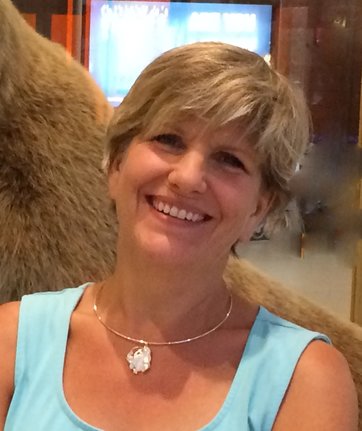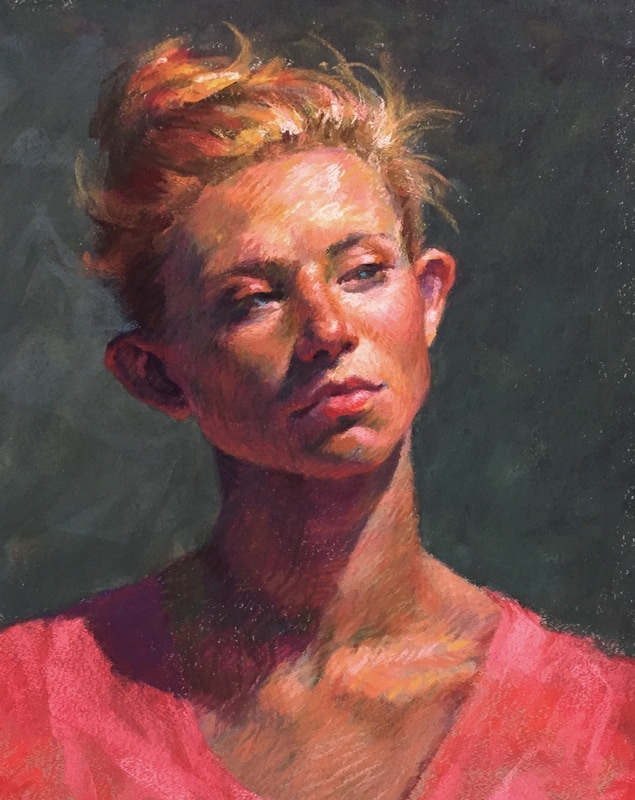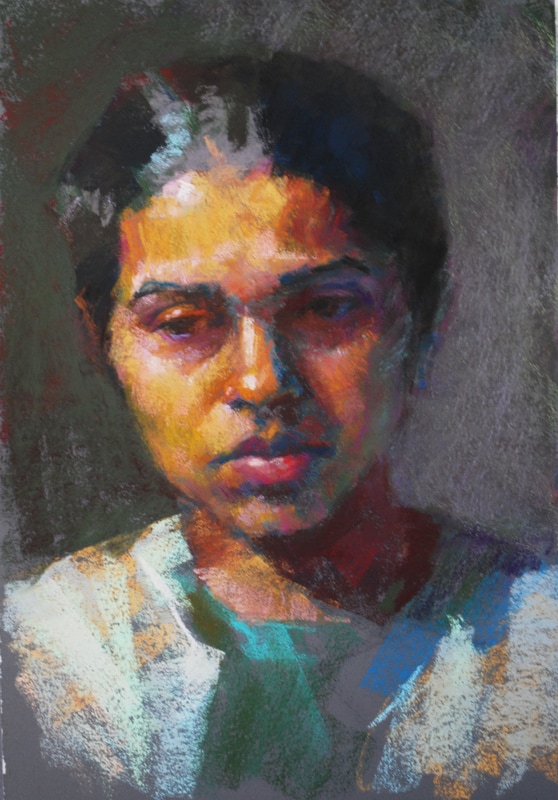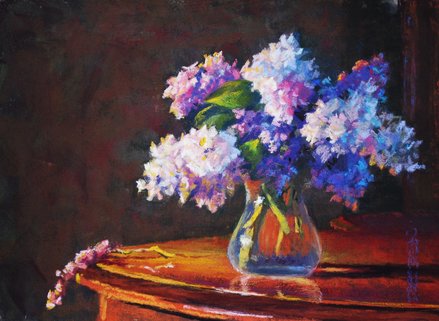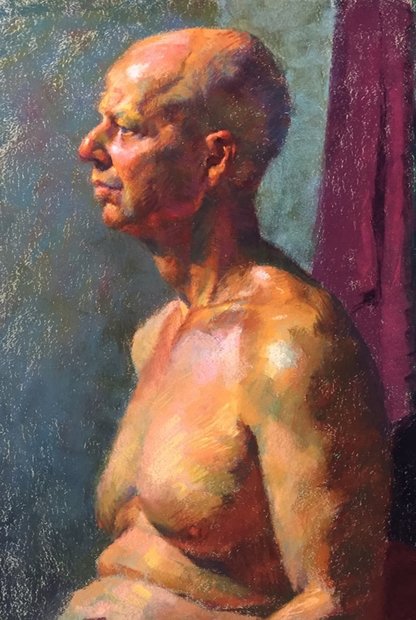Diane Rappisi
|
PSST: Diane, your bio mentions the light and chroma of the Cape Cod colorists. You use vivid colors that somehow have a subdued effect, and your color combinations are sometimes unusual. How do you select your colors and achieve such realistic skin tones?
|
DIANE: Yes, I do use vivid colors – they are so joyful to work with! My color selections are based on pure observation – letting go of expectations such as “this is a shadow so it must go grayer.” I keep a selection of brilliant colors in my pastel box – warm and cool versions of all the primary and secondary colors on the color wheel. Working in pastel is especially fun because of the “sparkle” created by the optical mixing of layer upon layer of pure pigment. I try not to blend my strokes so that I can preserve that freshness and purity of color.
There is an innate color harmony and hierarchy within any subject I’m depicting; it’s not just a noisy jumble of riotous color. In my painting process, my goal is to convey the effect of that particular subject in that particular lighting environment. The key is paying attention to that hierarchy. I first paint the large color masses that I see, as simply as possible. In subsequent passes I adjust and manipulate the colors, looking for the smaller variations within each large mass. These variations describe plane changes and build form. I must give credit where it is due – my studies at Studio Incamminati really opened my eyes to the wonders of color relationships. The school’s founder, Nelson Shanks, studied with Henry Hensche at the Cape Cod School of Art. Not only did he incorporate Hensche’s concepts of “seeing color” into his own work; he and the instructional team at the school developed a curriculum that helps sensitize the artist’s eye to the subtleties of color relationships. Having experienced that learning process, for me color has changed from a struggle to “get it right” to a joyful experimentation. |
